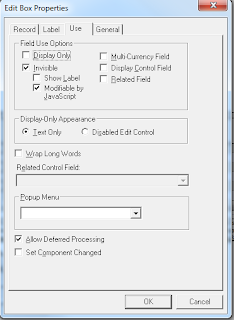I successfully created my first PeopleSoft Test Framework (PTF) test. I've been meaning to for some time. I was prompted by a bug our users found during our PeopleTools upgrade. The bug was not upgrade related. It had been there all along. So I followed the test first pattern. I created a test that failed due to the bug. Then I fixed the code and reran the test successfully to verify the bug was fixed. (As a novice, it wasn't quite that easy, but that was the end result.)
Peoplebooks does a fair, if overly wordy, job of describing how to get set up. I also leaned on the Remote PSAdmin blog. Because it uses Integration Broker, PTF requires some setup in the server/PIA side, so if you're not an admin, you'll need to enlist some help. The client is a Windows application.
One gotya', at least on Windows 7, the client has to run as Administrator. I do this by right-clicking the program in the Start Menu and selecting "Run as Administrator." If you don't do this, the recorder will not be able to "hook" the browser.
A few newbie hints:
Let me know your tips.
Peoplebooks does a fair, if overly wordy, job of describing how to get set up. I also leaned on the Remote PSAdmin blog. Because it uses Integration Broker, PTF requires some setup in the server/PIA side, so if you're not an admin, you'll need to enlist some help. The client is a Windows application.
One gotya', at least on Windows 7, the client has to run as Administrator. I do this by right-clicking the program in the Start Menu and selecting "Run as Administrator." If you don't do this, the recorder will not be able to "hook" the browser.
A few newbie hints:
- On search pages and other prompt fields fully enter the text. Don't pick from the prompt or type-ahead.
- It's easy to record new steps. Just select the test step before where you want to insert and open the recorder.
- Don't be afraid to blow you test away and start again if you mess it up too badly.
Let me know your tips.


